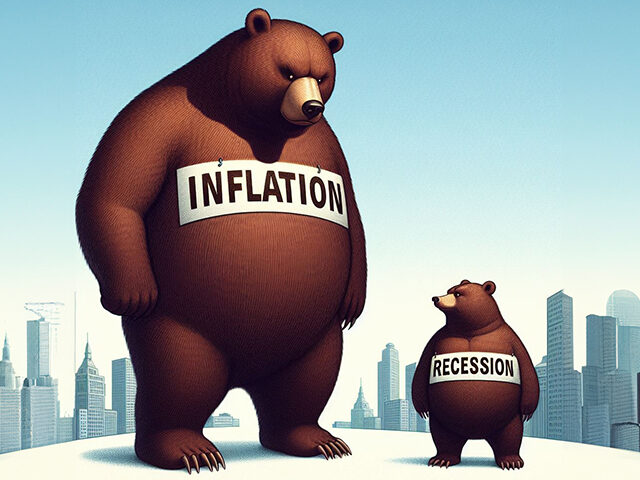The Ever-Looming, Never Landing Recession
The old joke asks, “What is always coming and never arrives?”
The traditional answer is: tomorrow.
Now we could also answer: the recession.
The only major piece of economic data published on Monday was the Conference Board’s Leading Economic Index (LEI). This is a predictive measure that aims to anticipate turning points in the economy by several months. Although still in the territory that indicates a looming recession, the index’s decline has moderated. In the first six months, it fell 4.3 percent, and in the second three months it fell by just 2.9 percent.
In November, the LEI was down 0.5 percent. Economists had forecast a 0.3 percent decline for December. The numbers released Monday showed just a 0.1 percent decline.
One way of reading this is that the odds of a recession are getting longer.
A History of the Missing Recession
It has been pretty wild watching the Conference Board describe what the index has been communicating.
“The US LEI declined for a fifth consecutive month in July, suggesting recession risks are rising in the near term,” the Conference Board’s Ataman Ozyildirim said 18 months ago. “Consumer pessimism and equity market volatility as well as slowing labor markets, housing construction, and manufacturing new orders suggest that economic weakness will intensify and spread more broadly throughout the US economy. The Conference Board projects the US economy will not expand in the third quarter and could tip into a short but mild recession by the end of the year or early 2023.”
That didn’t happen. In fact, the economy grew 3.2 percent in the third quarter and 2.6 percent in the fourth quarter of 2022.
“While the LEI continues to signal recession in the near term, indicators related to the labor market—including employment and personal income—remain robust so far. Nonetheless, The Conference Board still expects high inflation, rising interest rates, and contracting consumer spending to tip the US economy into recession in 2023,” the Conference Board said a year ago.
That also did not happen. Instead, the economy grew at a two percent pace in the first quarter, 2.1 percent in the second quarter, and a sizzling 4.9 percent in the third quarter.
Six months ago, this was the Conference Board’s assessment: “The leading index continues to suggest that economic activity is likely to decelerate and descend into mild contraction in the months ahead. The Conference Board now forecasts a short and shallow recession in the Q4 2023 to Q1 2024 timespan.”
This now seems highly unlikely. Wall Street is expecting that the government will report the economy grew at a two percent rate in the fourth quarter of last year. Economic data released last week suggest an even faster rate of growth. The Atlanta Fed’s GDPNow estimate—the final estimate before the release of the official number—is for 2.4 percent growth.
Here’s the latest assessment, from the Conference Board’s Justyna Zabinska-La Monica:
“The US LEI fell slightly in December, continuing to signal underlying weakness in the US economy. Despite the overall decline, six out of ten leading indicators made positive contributions to the LEI in December. Nonetheless, these improvements were more than offset by weak conditions in manufacturing, the high interest-rate environment, and low consumer confidence. As the magnitude of monthly declines has lessened, the LEI’s six-month and twelve-month growth rates have turned upward but remain negative, continuing to signal the risk of recession ahead. Overall, we expect GDP growth to turn negative in Q2 and Q3 of 2024 but begin to recover late in the year.”
So, now the downturn has retreated until the middle of this year.
Notice also that the Conference Board no longer necessarily expects a recession, just two quarters of negative growth. As we all learned in the beginning of 2022, two consecutive quarters of negative growth do not officially count as a recession, at least as long as there is a Democrat in the White House.
Still, that is pretty terrible timing if you are an incumbent president. You do not want the economy slipping into a recession or even a non-recessionary two-month contraction six months before the public is tasked with deciding whether to give you a second term.
If we were Biden, however, we would not sweat the recession threat too much. A revival of inflationary pressures are the bigger threat.
Rate Cuts Odds Keep Falling
The economic data last week has upended expectations that the Fed would begin cutting interest rates as soon as March. While the future market implied odds of a March cut rose as high as 85 percent as the new year dawned and were solidly above 75 percent a week ago, they fell below 50 percent on Friday.
This morning the odds fell even further, crashing below 40 percent, despite the lack of economic data over the weekend and nothing besides the LEI on Monday morning. What appears to be happening is that the market is digesting the data suggesting the employment and consumer spending held up much better than expected at the end of the year, which raises the prospect that inflation could reignite and will likely make Fed officials hesitant to pull the trigger on rate cuts.
In other words, the market is slowly coming around to the view that the immediate threat to the economy is sticky or rising inflation and not a recession.

COMMENTS
Please let us know if you're having issues with commenting.